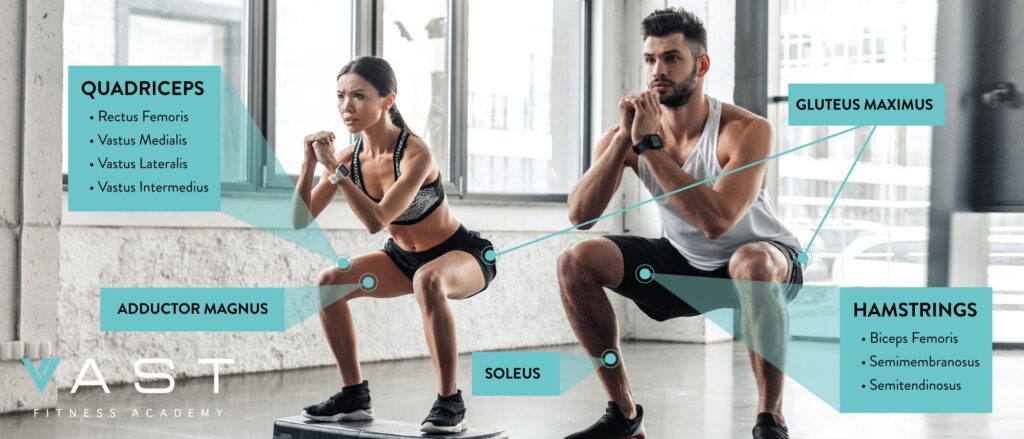Lets break the Bodyweight squat down into its main parts.
Type of movement – Compound Movement
Major joints involved – Hip, knee and ankle
Major muscle groups involved – Quadriceps and Gluteus Maximus
Synergists involved – Hamstrings
Performing a Bodyweight Squat
The bodyweight squat is one of the best compound exercises in our exercise library, as a result, it can also be an exercise that many people struggle to perform and teach correctly.
Below are five steps on how to get the most out of your squat:
1. Stand with the feet shoulder-width apart, toes pointing straight ahead.
2. Begin the movement by breaking at the hips first and allowing the rest of the body to follow (breaking at the knees first, can affect the natural flow of the movement).
3. Push the glutes behind you as though you are trying to sit on a chair (ensure the chest is kept upright and the core muscles are activated to help maintain a neutral spine).
4. Continue to a depth that is comfortable – this is different for everyone based on their flexibility and joint mobility.
5. Once a comfortable depth is reached (without compromising form/technique), return to the top of the movement by contracting/engaging the glutes and pushing up through the heels.
Bodyweight Squat teaching cues to amend common mistakes.
Look up – this helps keep the chest proud and in an upright position
Push through the outside edge of the feet – this helps to prevent internal rotation of the knees and ensures they track correctly
Push through the heels – imagine you are pushing your weight through your heels into the floor.
Do you need further squat instructions?
Have you ever considered furthering your fitness education? Certificate III in Fitness is a great place to start and can help you with your own training and understanding of exercise instruction.
